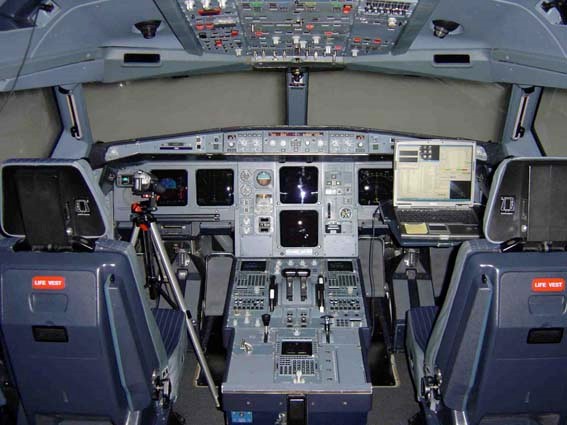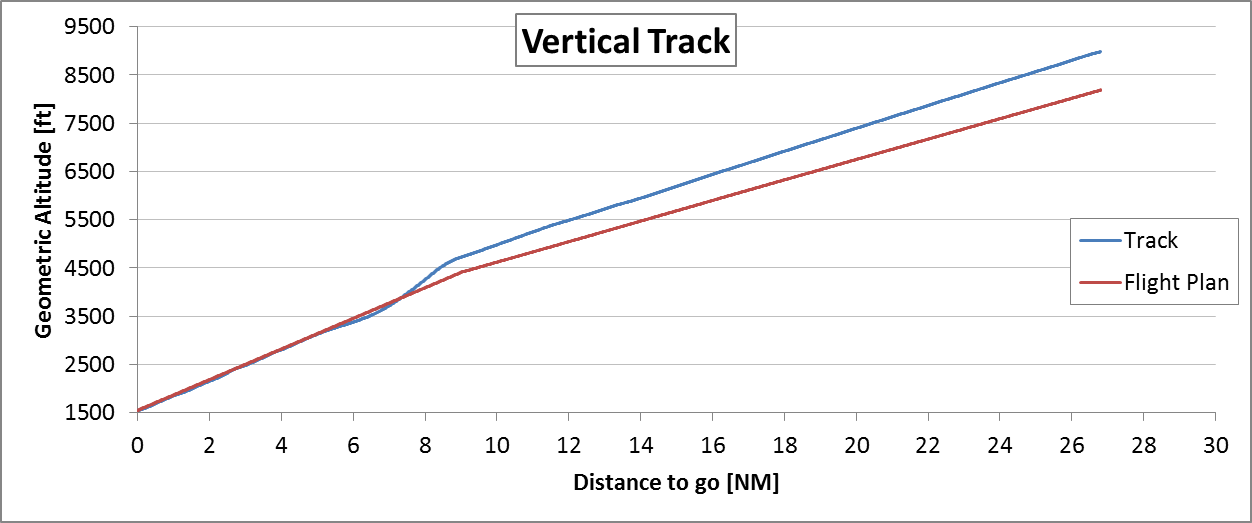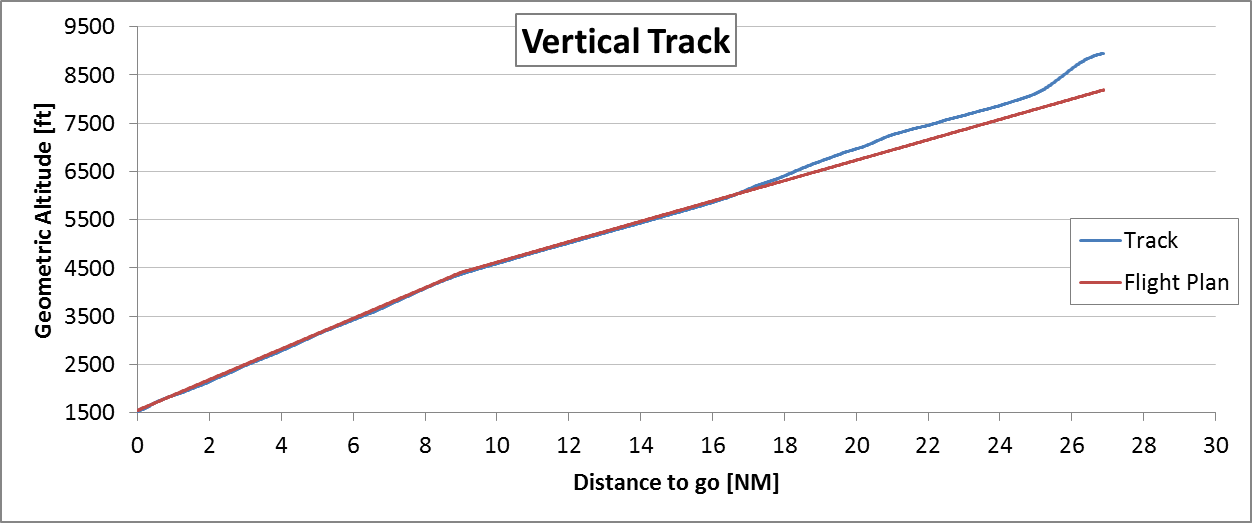These studies, listed in chronological order, are summarised below and linked to the published and reports.
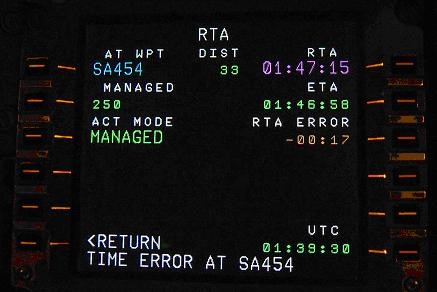 This was an early pre-SESAR study on the availability, characteristics and performance of the Required Time of Arrival (RTA) function in existing Flight Management Systems (FMS). The evaluation included an assessment of the impact of wind on RTA, as well as some observations about the human machine interface aspects.
This was an early pre-SESAR study on the availability, characteristics and performance of the Required Time of Arrival (RTA) function in existing Flight Management Systems (FMS). The evaluation included an assessment of the impact of wind on RTA, as well as some observations about the human machine interface aspects.
A copy of this report can be downloaded from here.
This study investigated how a high performing RTA function could be implemented and operated in aircraft without automatic speed control (auto-thrust) and basic vertical management and guidance functions (e.g. descent strategies using a constant flight path angle or vertical speed). The target speed calculated by the RTA function was indicated by a blue dot on the Primary Flight Display (PFD).

Flight tests performed in an A330 simulator have indicated that the existing standardised CAT I Ground Based Augmentation System (GBAS) with a Vertical Alert limit of 10m as per ICAO Annex 10, may be operationally suitable for CAT II and Other Than Standard (OTS) CAT II operations.
The tests demonstrated that failures leading to a maximum of 10m vertical deviation are operationally acceptable for CAT II operations as the landing point was always well within the landing box criteria used for the demonstration of autoland systems. Lateral deviations were easily detected but pilots expressed difficulty in detecting the vertical errors. Vertical errors less than 10m were not detected by the pilots based on cues in the visual segment. However, pilots continued the approach and touchdown was within the normal touchdown zone. Some but not all pilots detected errors larger than 10m (e.g. 15m) which in some cased led to a go around.
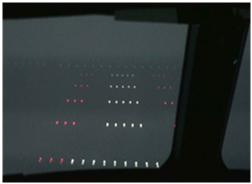
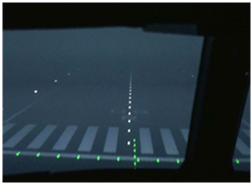
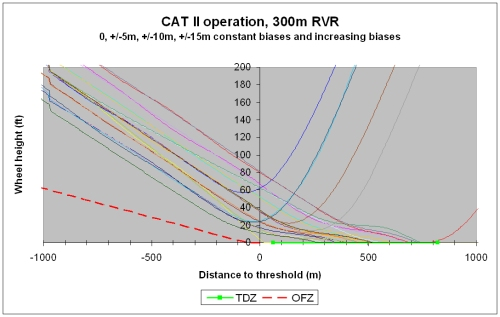
A copy of this report can be downloaded from here.
A series of flight simulations was performed during which large vertical biases (from 5 to 28m) were introduced in the vertical guidance of the aircraft, while the flight instruments indicated “error-free” operations. The objective of these tests was to simulate the unlikely event of a large undetected vertical bias in new GNSS based precision final approach operations. Most pilots had great difficultly with detecting the vertical bias based on solely visual indications in the visual segment of the final approach. This led to a few unsatisfactory landings and go-around initiations at very low altitudes.

The results were used to formulate recommendations to the ICAO Navigation Systems Panel (NSP) on the requirements of vertical system performance for GNSS-based precision final approach operations.
A copy of the report is available upon request.
Ìn cooperation with a major European airline, the first real operational flight test using a Fixed Radius Transition (FRT) at a turn waypoint in an ATS route was performed. The FRT was coded in the navigation database. Flight data was collected and additional simulations were performed to confirm the findings.
A Fixed Radius Transition (FRT) can be used to allow an aircraft turning at a waypoint of an ATS route with a constant turn radius. It differs from the ARINC 424 Radius-To-Fix Path Terminator as follows:

- FRT can be used on Airways. The start and end points of the turn are not coded but calculated by the FMS internally. As such, the FRT is an en-route turn transition with a constant radius.
- RF can be coded on instrument procedures (STAR, SID or Approach). The coding contains the start en end fixes of the constant radius turn.
- Fleet equipage rates of the RF function are currently much higher than for FRT.
A copy of this report can be downloaded from here.
An experiment was conducted investigating the behaviour of different aircraft types when performing a transition from a curved RNP procedure to a precision final approach (using an ILS, GLS or more generically an xLS landing system). During this transition, the navigation source needs to switch from FMS based to xLS based navigation. Basic procedures were coded in ARINC 424 format whereby a Radius-To-Fix (RF) leg connected directly to the localizer/glideslope intercept point of a 3, 6 or 9 NM final segment. The procedures were flown using RF capable certified full motion flight crew training simulators. To test the influence of possible navigation position errors on the xLS transition, lateral biases with various magnitudes up to 0.3 NM in all directions were introduced in the procedures. Significant differences were observed in the capture capability of the localizer in the various aircraft types. Recommendations were formulated regarding the required navigation performance and the minimum final approach segment length for the successful conduct of these operations.


A copy of this report can be downloaded from here.
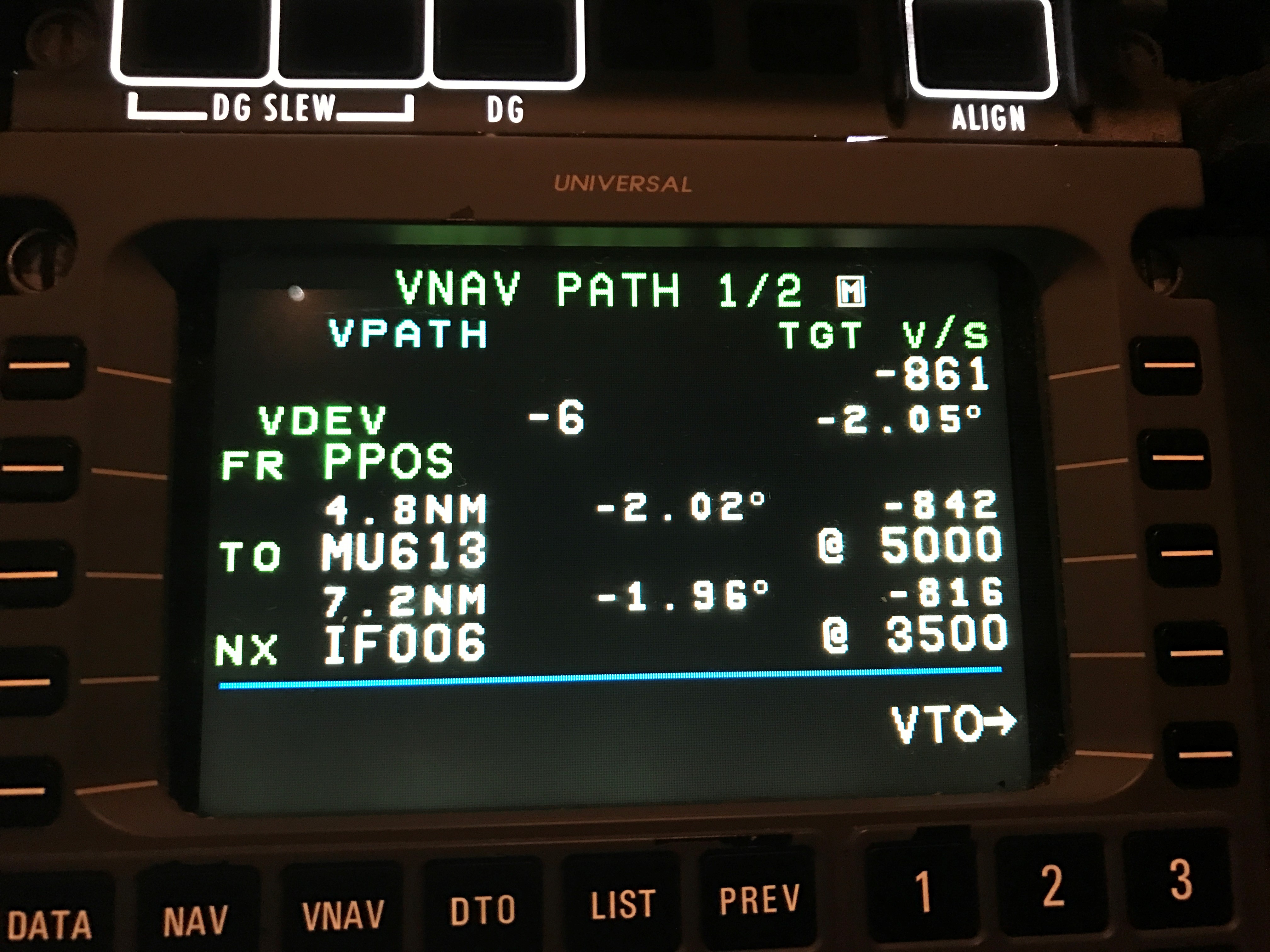 Besides the effect of the lateral navigation errors on the xLS transition already studied in the previous work, the additional effects of deviations in the vertical profile caused by non-standard temperatures (ISA-35 to ISA+ 35 degrees) were investigated. Also, a number of scenarios were added to the test cases which contained steeper glide paths with angles up to 4 degrees. Conclusions were formulated regarding the different aircraft capabilities and performances, as well as flight crew considerations. One of those conclusions is that the final approach glide path needs to be intercepted with a vertical angle which is significantly shallower than the glide path.
Besides the effect of the lateral navigation errors on the xLS transition already studied in the previous work, the additional effects of deviations in the vertical profile caused by non-standard temperatures (ISA-35 to ISA+ 35 degrees) were investigated. Also, a number of scenarios were added to the test cases which contained steeper glide paths with angles up to 4 degrees. Conclusions were formulated regarding the different aircraft capabilities and performances, as well as flight crew considerations. One of those conclusions is that the final approach glide path needs to be intercepted with a vertical angle which is significantly shallower than the glide path.
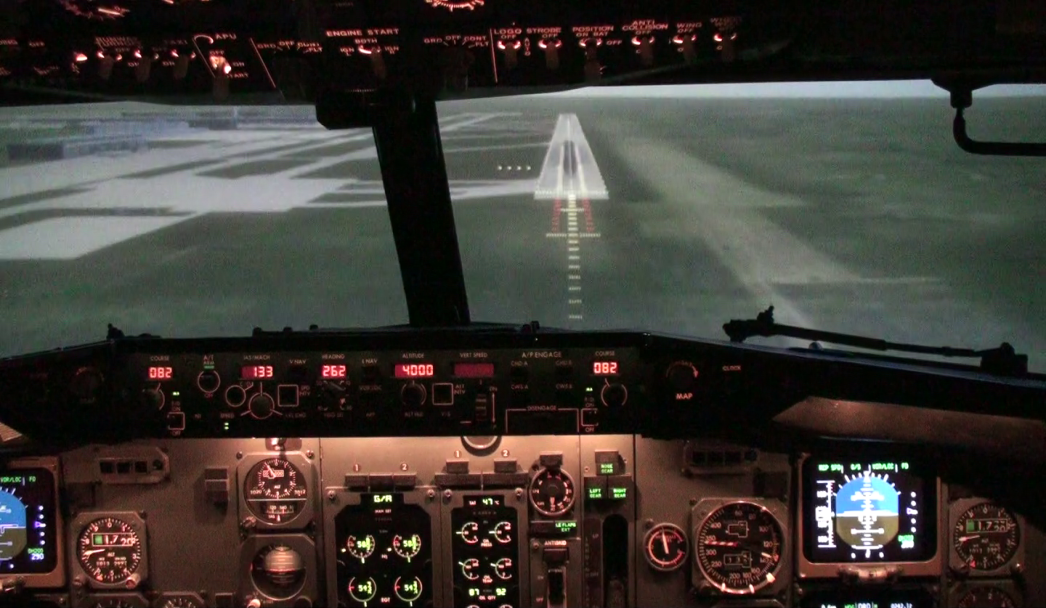 The work has led to recommendations to the Instrument ICAO Instrument Flight Procedures Panel (IFPP) and an amendment to the procedure design criteria in PANS-OPS, which will be published end of 2019.
The work has led to recommendations to the Instrument ICAO Instrument Flight Procedures Panel (IFPP) and an amendment to the procedure design criteria in PANS-OPS, which will be published end of 2019.
A copy of this report can be downloaded from here.
A paper entitled 'What is a SID/STAR, what is a Transition?', developed by EUROCONTROL, provides an overview of the differences between the ICAO provisions on the naming convention of Instrument Flight Procedures (IFPs) and how they are coded into the Flight Management System (FMS). ICAO sets out the Instrument Flight Procedures (IFPs) naming convention in Annex 11, Appendix 3. ARINC 424, an industry standard, provides a coding format for SIDs, STARs and Instrument Approach Procedures (IAPs) using a concept of “Transitions” (including en-route and approach transitions). However, the term 'Transition’ which is used in ARINC 424 coding is not defined by ICAO. This has led to a variety of chart titles and differing applications across the terminal airspaces of Europe. The document aims to highlight the differences between the ARINC 424 coding of IFPs and the ICAO provisions on the naming convention of IFPs.
A copy of this paper can be downloaded from here.


SIMULATIONS INVESTIGATING CURVED DEPARTURE AND ARRIVAL PROCEDURES USING GNSS BASED VERTICAL GUIDANCE
 In this project, the use of the Radius-to-Fix (RF) function at all altitudes/flight levels was researched as well the use of the RF at the Departure End of Runway (DER), allowing early turns after departure. For RF turns at the DER, the altitude at the turn initiation is significantly influenced by factors like runway length and individual aircraft performance, which will affect the feasibility of this operation.
In this project, the use of the Radius-to-Fix (RF) function at all altitudes/flight levels was researched as well the use of the RF at the Departure End of Runway (DER), allowing early turns after departure. For RF turns at the DER, the altitude at the turn initiation is significantly influenced by factors like runway length and individual aircraft performance, which will affect the feasibility of this operation.
Furthermore, the project investigated flight deck integration requirements and operational benefits for the use of GNSS based altitude in approaches, outside the final approach segment. This would allow earlier stabilisation on a required vertical path during initial and intermediate approach flight phases, excluding the influence of temperature on the vertical path and final approach glide path interception. This is illustrated in the two graphs below: the first graph results from a normal descent using barometric altitude while in the second graph, the vertical guidance transitioned from barometric based to geometric based vertical guidance before interception of the final approach path. Expected benefits are in the areas of procedure design, flight efficiency and flight crew workload.
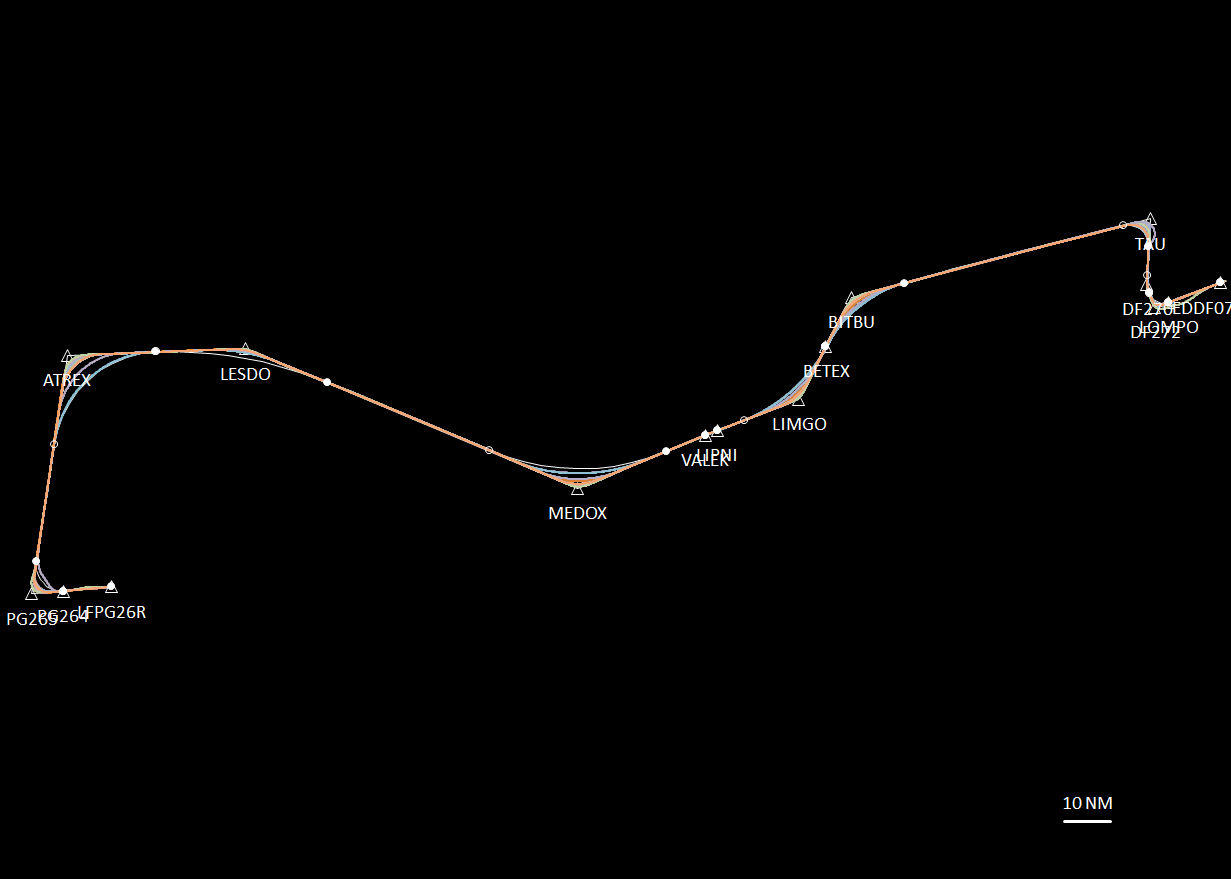 The ICAO PBN manual contains Navigation Specifications which define the required navigation accuracy of an operation, often expressed as a Total System Error (TSE). For example for RNP 1 operations, the TSE must be within 1NM for at least 95% of the total flight time. The Total Navigation System Error (TSE) consists of the following components:
The ICAO PBN manual contains Navigation Specifications which define the required navigation accuracy of an operation, often expressed as a Total System Error (TSE). For example for RNP 1 operations, the TSE must be within 1NM for at least 95% of the total flight time. The Total Navigation System Error (TSE) consists of the following components:
TSE2 = PEE2 + PSE2 + PDE2
With:
PEE = Position Estimation Error
PSE = Path Steering Error
PDE = Path Definition Error
Documents like RTCA DO-208 provide industry accepted values for the Path Steering Error (PSE), which date from before 1991. It is expected that modern aircraft will perform better, therefore EUROCONTROL has undertaken a study to measure the PSE during a series of simulated flights, under known conditions and using a wide range of aircraft types and equipment. The data is used to statistically analyse tracking performance of aircraft types representing the current ECAC fleet, for both automatic and manual flight (using Flight Director) and on both straight and turning segment.
A copy of the report will soon be available.
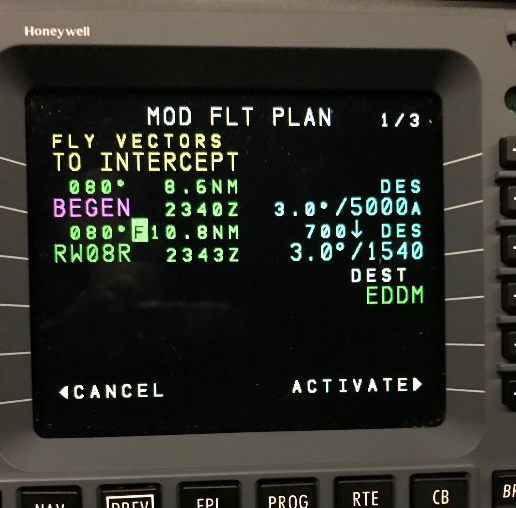
Aircraft in operating in the Terminal Area often receive radar vectors from Air Traffic Control before intercepting the final approach procedure to land. Today, intercepting an ILS final approach procedure from a radar vector is quite simple as modern avionics provide an “arm final approach” function, which automatically intercepts the ILS final approach course when the aircraft is in the capture range. For RNP approach procedures, the situation is different. Most often an “extension” of the final approach course needs to be created in the flight plan of the navigation computer or the Flight management System (FMS) and previous waypoints in the FMS flight plan need to be deleted. FMS manufacturers have designed specific functions to enable this operation, using different terminologies as for example “Radial-In”, “Direct to Intercept Course”, “Activate Vectors”, etc. In addition, performance levels and ease of use of these functions vary.
Simulations performed by EUROCONTROL have investigated the performance and characteristics of these functions. Differences between various implementations, their ease of use and suitability for operation in a dense traffic environment were investigated.
A copy of this report will be released shortly.
For further information, contact the NAV User Support Cell.

